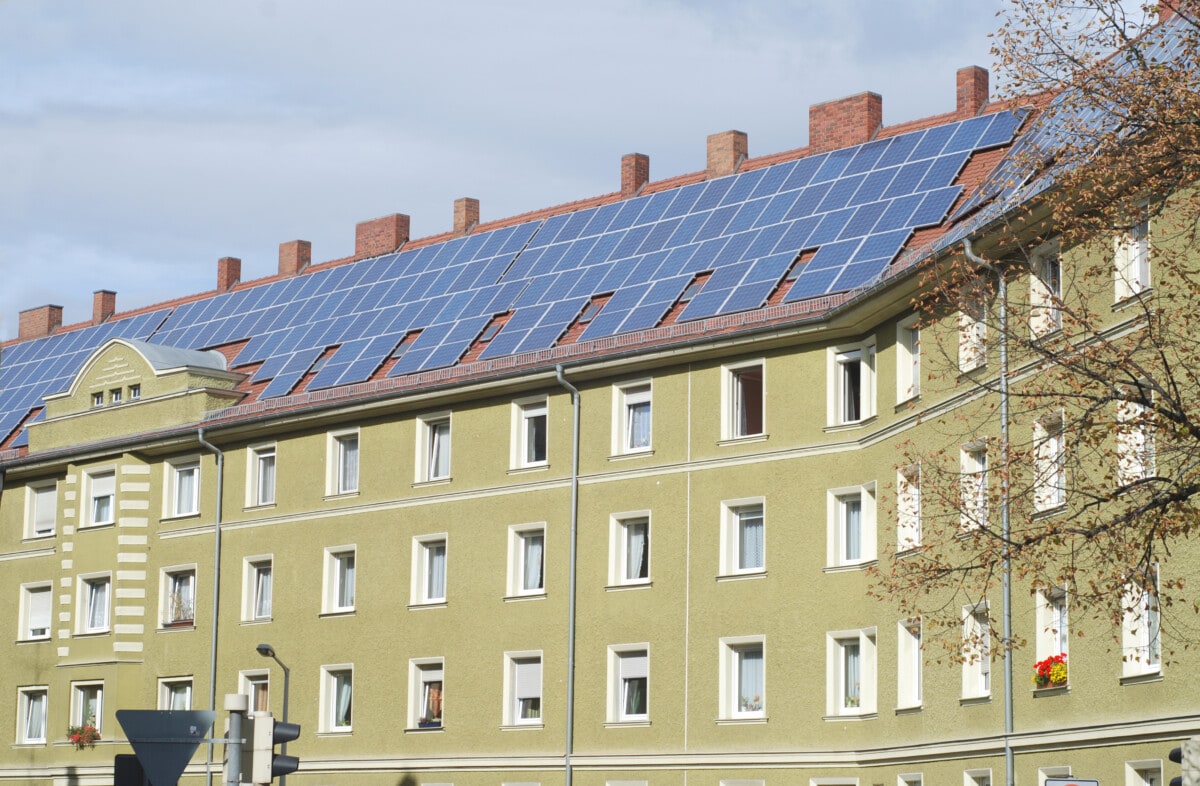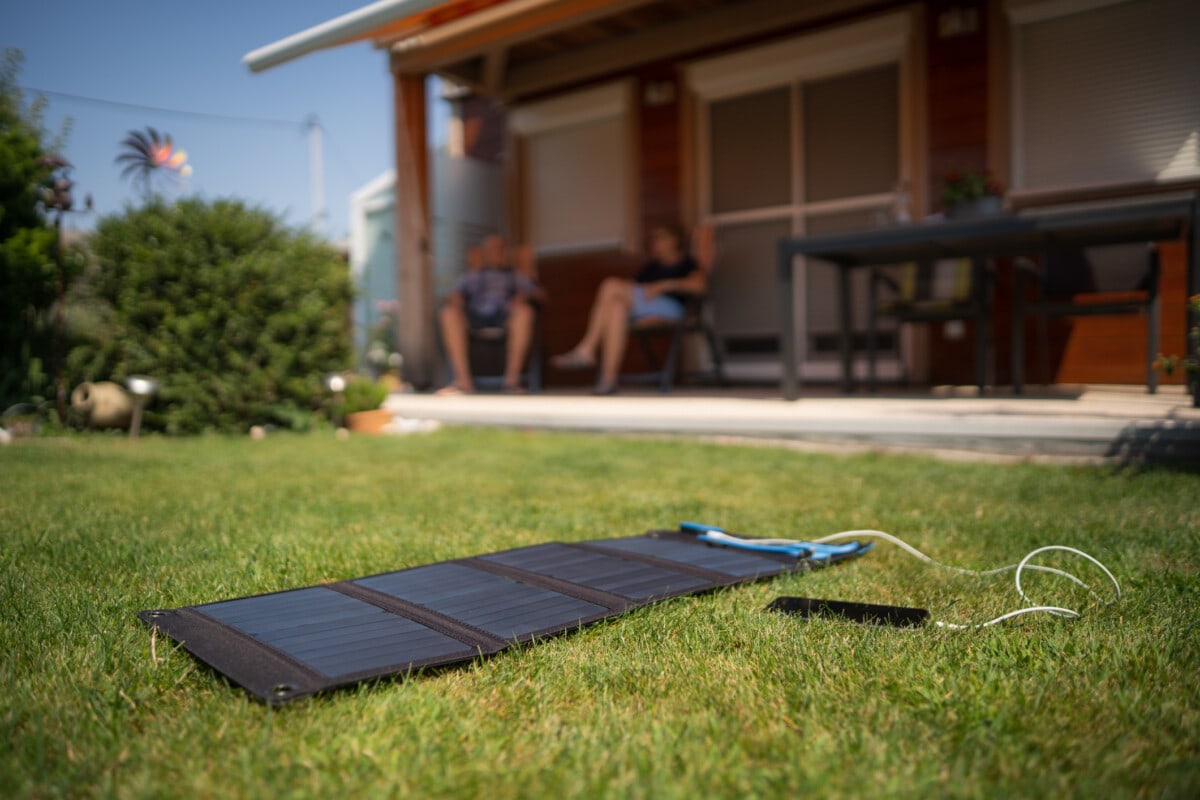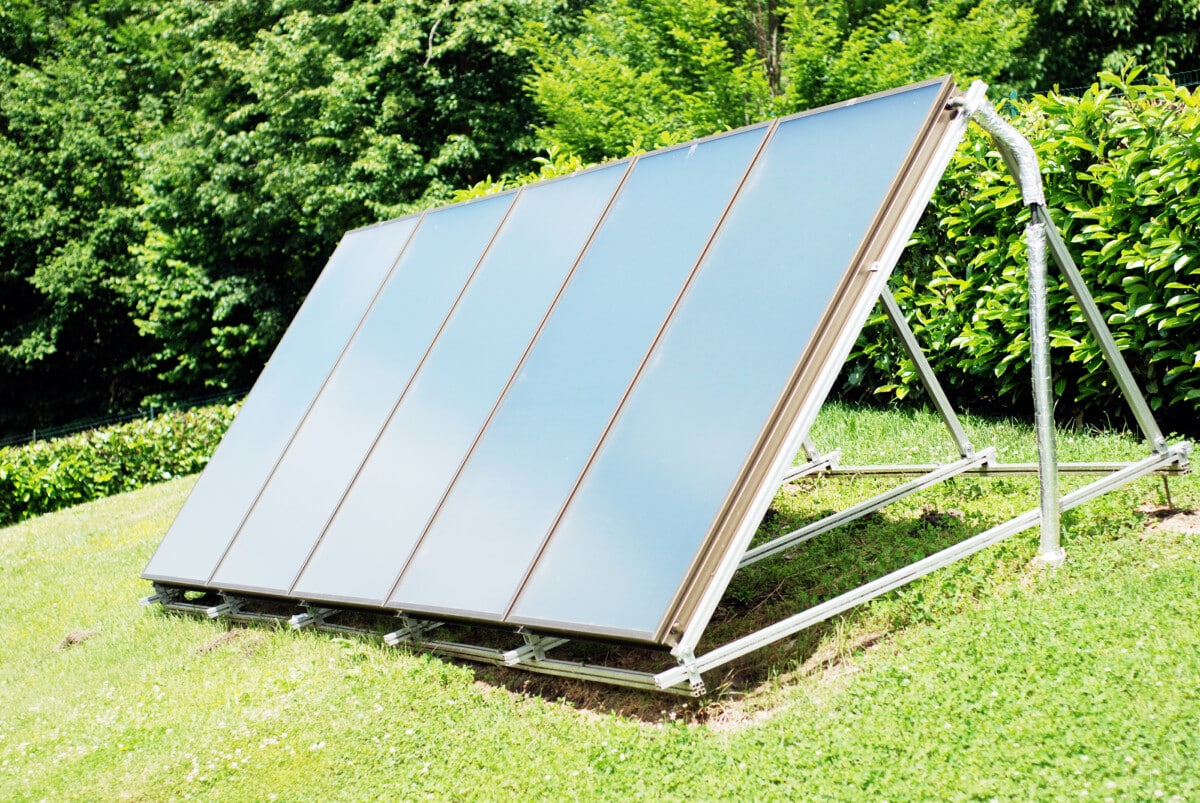As the world shifts toward a greener and more sustainable lifestyle, many people are looking to renewable energy sources to help reduce their environmental impact. One of the most popular methods is solar energy, using solar panels to harness the sun’s power. However, most people think solar panels are reserved for houses and businesses with lots of roof space. This isn’t true; the transition to solar is for everyone.
But can you use solar panels for apartments? In this Redfin guide, we have everything you need to know about using solar energy in your rental. So whether you live in a studio apartment in Tampa, FL, or a 2-bedroom apartment in Brentwood, CA, read on for everything you need to know.

Can you use solar panels in your apartment?
Yes, in most cases, you can benefit from solar power in your apartment. However, it may not be as straightforward as asking your landlord to install a solar panel on the roof or buying one yourself.
Installing traditional rooftop solar panels in an apartment building is often impossible due to space constraints, ownership issues, management, state regulations, and your building’s location. It also may be difficult to use alternative methods of using solar energy, as every state has different laws and programs. However, don’t let these hurdles deter you from investing in renewable energy.
How to use solar power in your apartment
1. Convince your landlord to go solar
Probably the easiest way to get traditional solar panels for apartments is to talk with your landlord. There is no one way to go about this, and it may not be possible depending on your building’s location. However, if you decide to talk with your landlord, here are some benefits to highlight:
- Start by educating your landlord about the financial benefits. Although the upfront cost can be substantial, federal, state, and local incentives can often help offset these costs, and the savings on electricity bills over time can make it a financially sound investment.
- Solar panels can increase property value and appeal to future tenants. And for residents, solar panels can reduce monthly utility costs.
- Landlords can also receive income from surplus energy and gain a reputation as forward-thinking property managers.
- Solar energy is one of the most sustainable and cleanest sources of energy. By converting their properties to solar, landlords can significantly reduce the carbon footprint of their buildings, contributing to environmental conservation and sustainability.
- No matter what, make sure to present your case professionally and respectfully. Your landlord will be more likely to seriously consider your proposal if it’s well-reasoned and clearly communicated.

2. Invest in miniature or alternative solar
Since you likely can’t install a solar panel system on your own, another option is to use miniature or alternative solar power systems. Here are a few of the most popular options.
- Portable solar panels: Portable solar panels are another viable option. They’re essentially tiny solar panels that you place in your window. You can move them around to capture maximum sunlight throughout the day and can charge devices like your smartphone or laptop directly or store energy in a portable battery for later use. Portable panels are an excellent choice for renters since they can be taken with you when you move.
- Solar batteries: Solar batteries can store energy to power your devices and appliances. They may not offer a large benefit, but every effort matters.
- Solar water heaters: These are a great option if your landlord allows it. They use solar energy to heat water and store it for when you need it and can replace a traditional water heater, depending on your climate.
- Solar air conditioners: If you have an area in your home that receives a lot of sunlight, you can use a window-mounted or portable air conditioner to cool a room.
3. Purchase SRECs
Another option is to purchase Solar Renewable Energy Credits (SRECs). SRECs are tradable commodities anyone can earn from generating solar energy or purchasing on the open market. States usually create SRECs to help utility companies meet their renewable energy goals more quickly, but they are also available to the general public through private companies. While SRECs don’t directly reduce your carbon footprint or generate power on their own, they can incentivize solar growth in your state and show your commitment to the environment.
SRECs aren’t available in every state, and prices vary widely depending on where you live. There is no nationwide governance on solar credits, which can lead to inflated prices and limited impact. Make sure you do your research before choosing to invest.

4. Join a community solar program
Community solar, also known as shared solar or solar gardens, is an increasingly popular option that allows multiple people to benefit from a single solar array. This setup can make solar power accessible to people with limited space and access, such as renters and small businesses.
Here’s how community solar generally works:
- A third-party developer, often a solar installation company or a utility, builds a solar array, often on a large rooftop or unused piece of land. This array is usually larger than a typical residential solar panel system and can generate much more power.
- States have unique laws limiting the size and capacity of community solar arrays. For example, in Washington State, these arrays can generate a maximum of 1 MW, designed to generate enough power for multiple households or buildings.
- Once it’s built, individuals or businesses can buy (usually a monthly subscription) a portion of the electricity the solar array produces. A 5% share is fairly typical.
- Once the solar array begins producing electricity, you can start saving money because the credit from your share of the solar project offsets the cost of the electricity you consume. Utility companies determine bill credits and generally have regulating power.
Community solar can be cheaper than individual solar panels because the cost is spread between many people. There are also government programs for low-income and HUD-assisted housing renters to utilize community solar at no extra cost. However, community solar projects are often full and aren’t widely available.
Pros and cons of solar panels for apartments
Investing in and taking advantage of solar energy as a renter is beneficial, but can be complicated. Here are some pros and cons to keep in mind.
Pros
- Reducing your carbon footprint: If you’re able to get your landlord to install solar panels, or you’re able to use miniature solar generators, you are reducing your carbon footprint.
- Saving money: If you can convince your landlord to install solar panels for your apartment, you could save money on utility bills.
- Investing in your community: Purchasing solar credits and participating in a community solar program can have a big impact on your community. By investing money into renewable energy, you are helping it grow and become more widely available.
Cons
- No tax credit: You can’t claim the solar federal tax credit if you use a community solar program or don’t own the property the panels are on.
- Few solar options: In many cases, it’s very difficult to utilize solar energy as a renter. Dozens of states don’t offer community solar programs or SRECs, and your building may not receive enough sunlight for a portable panel.
- Limited utility savings: You won’t receive anywhere near the financial benefits that your landlord will if they install solar panels. Additionally, community solar and miniature solar solutions offer little to no utility credits compared to traditional arrays.

Final thoughts on solar panels for apartments
While you may not be able to install solar panels on the roof of your apartment building, there are other ways to take advantage of solar energy and help reduce your carbon footprint. From talking with your landlord to joining a community solar program, there are plenty of options.
No matter your method, do your research and ensure you are following all rules and regulations. And if you’re unable to use any kind of solar energy, consider talking with your local city council, state government, or otherwise to get the ball rolling. Renewable energy is essential to lowering global emissions and slowing climate change, so every effort matters.



























 United States
United States Canada
Canada